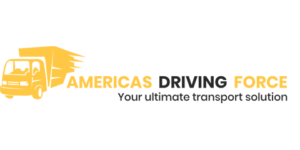There are 3 main types of CDL classes. Federal law requires you have a permit based on the gross vehicle weight rating (GVWR) and its requirements are administered by the Federal Motor Carrier Safety Administration (FMCSA) and sourced directly.
However, it’s your respective state that issues a CDL or CLP (commercial learner permit) based on the following license classifications.
Class A
Required for a gross combination weight of 11,794 kilograms or more (26,001 pounds or more) whichever is greater, inclusive of a towed unit(s) with a gross vehicle weight of more than 4,536 kilograms (10,000 pounds) whichever is greater.
Class B
This is required for any single vehicle which has a gross vehicle weight of 11,794 or more kilograms (26,001 pounds or more), or any such vehicle towing a vehicle with a gross vehicle weight that does not exceed 4,536 kilograms (10,000 pounds).
Class C
This classifies any single vehicle, or combination of vehicles, that does not meet the definition of Class A or Class B, but is either designed to transport 16 or more passengers, including the driver, or is transporting material that has been designated as hazardous under 49 U.S.C. 5103 and is required to be placarded under subpart F of 49 CFR Part 172 or is transporting any quantity of a material listed as a select agent or toxin in 42 CFR Part 73.
What’s the main difference between Class A and Class B?
It comes down to the towing. If you are towing vehicles that have a weight rating of no more than 10,001 lbs. If the trailer being towed has a gross weight rating of 10,001 lbs or more you need a Class A.
Keep in mind, the total weight includes everything including the cargo and passengers.
Endorsements
| T | Double/Triple Trailers (Knowledge test only) |
| P | Passenger (Knowledge and Skills Tests). This lets you drive a truck with a set number of passengers. |
| N | Tank vehicle (Knowledge test only). This lets you drive tank vehicles. |
| H | Hazardous materials (Knowledge test only). This lets you drive a truck with hazardous materials. |
| X | Combination of tank vehicle and hazardous materials endorsements (Knowledge test only). This lets you drive trucks with a tank and hazardous materials. |
| S | School Bus (Knowledge and Skills Tests). This lets you drive a school bus. |
| P | Passenger, A CLP holder with a "P" endorsement is prohibited from operating a CMV carrying passengers, other than Federal/state auditors and inspectors, test examiners, other trainees, and the CDL holder accompanying the CLP holder as prescribed by 49CFR383.25(a)(1). |
| S | School Bus, A CLP holder with an "S" endorsement is prohibited from operating a school with passengers, other than Federal/state auditors and inspectors, test examiners, other trainees, and the CDL holder accompanying the CLP holder as prescribed by 49CFR383.25(a)(1). |
| N | Tank Endorsement, A CLP holder with an "N" endorsement may only operate an empty tank vehicle, and is prohibited from operating any tank vehicle that previously contained hazardous materials that have not been purged of any residue. |
Restrictions
| L | If the driver does not pass the Air Brakes Knowledge Test, does not correctly identify the air brake system components, does not properly conduct an air brake systems check, or does not take the Skills test in a vehicle with a full air brake system, the driver must have an "L" no full air brake restriction placed on their license. |
| Z | If the driver takes the test in a vehicle with an air over hydraulic brake system, then they will have a "Z" no full air brake restriction placed on their license. In either case the driver is not authorized to operate a CMV equipped with full air brakes. |
| E | If the driver takes the Skills Test in a vehicle that has an automatic transmission, then an "E" no manual transmission restriction is placed on their license. |
| O | If the driver takes the Skills Test in a Class A vehicle that has a pintle hook or other non-fifth wheel connection, they will have an "O" restriction placed on their license restricting them from driving any Class A vehicle with a fifth wheel connection. |
| M | If a driver possesses a Class A CDL, but obtains his or her passenger or school bus endorsement in a Class B vehicle the State must place an "M" restriction indicating that the driver can only operate Class B and C passenger vehicle or school buses. |
| N | If a driver possesses a Class B CDL, but obtains his or her passenger or school bus endorsement in a Class C vehicle; the State must place an "N" restriction indicating that the driver can only operate Class C passenger vehicle or school buses. |
| V | If the State is notified by the FMCSA that a medical variance has been issued to the driver, the State must indicate the existence of such a medical variance on the CDLIS driving record and the CDL document using a restriction code "V" to indicate that there is information about the medical variance on the CDLIS record. |
This is the first place to start your search.
Submit your information below to find employers and CDL training schools near you.
Examples of trucks for CDL Classes A, B and C:
Class A – These can include any of the following:
- Tractor-trailers
- Truck and trailer combinations
- Tank vehicles
- Livestock carriers
- Flatbeds
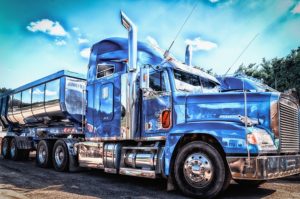
Class B – These can include any of the following:
- Buses (public transport or school)
- Cube trucks for transport
- Tractors and farming trucks
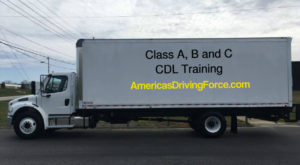
Class C – These can include any of the following:
- Hazardous transport trucks such as oil, gas & waste
- Smaller cargo trucks with a weight rating of less than 10,001 lbs
- Small transport bus
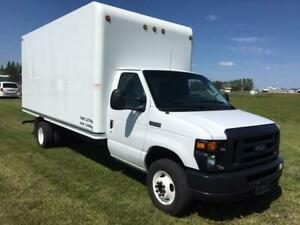
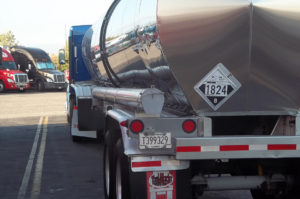
Do you have any questions as to what the different types of CDL classes are? Leave your questions below and one of our trucking school experts will reply back to you.
